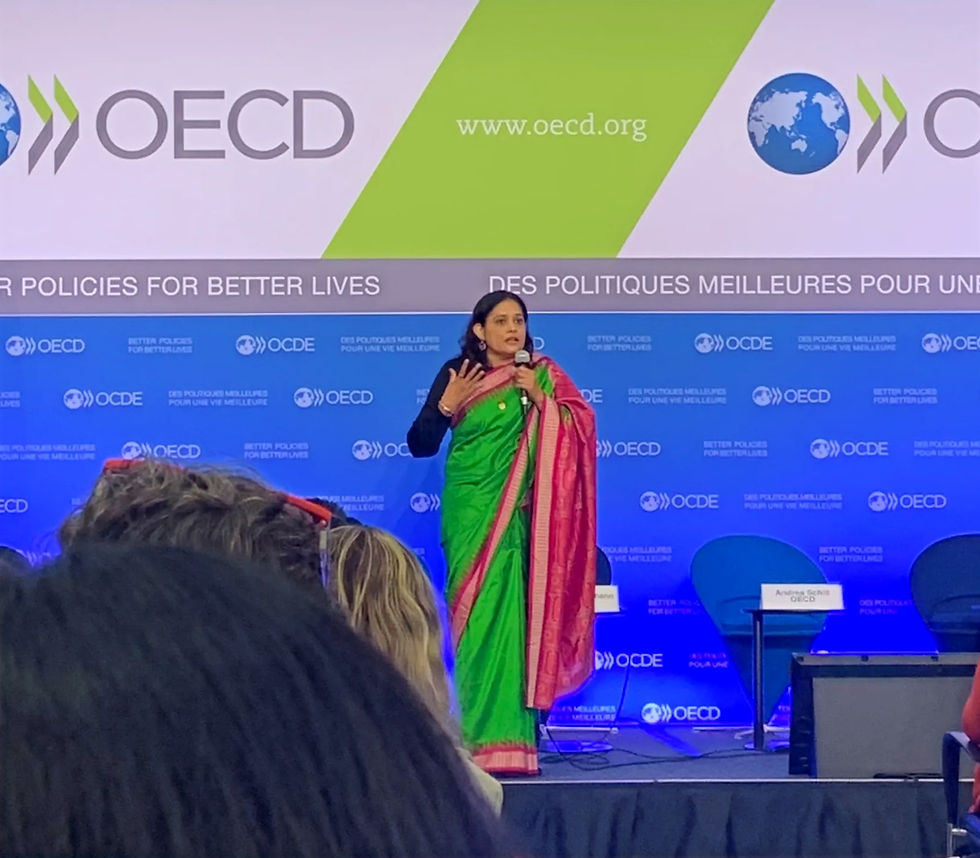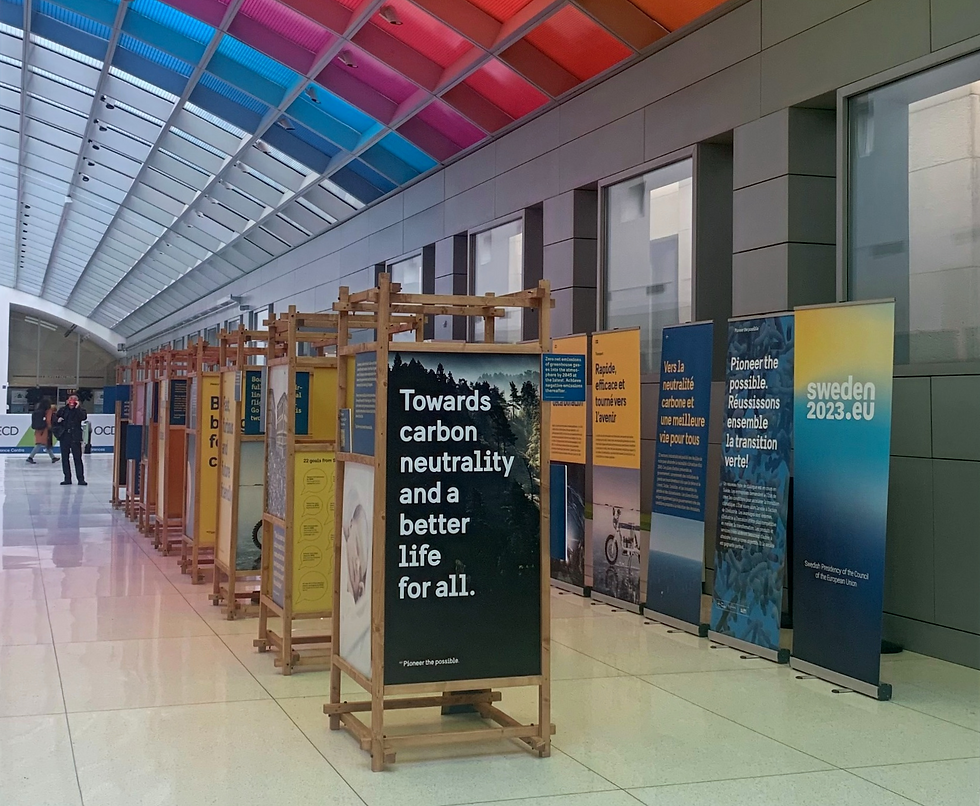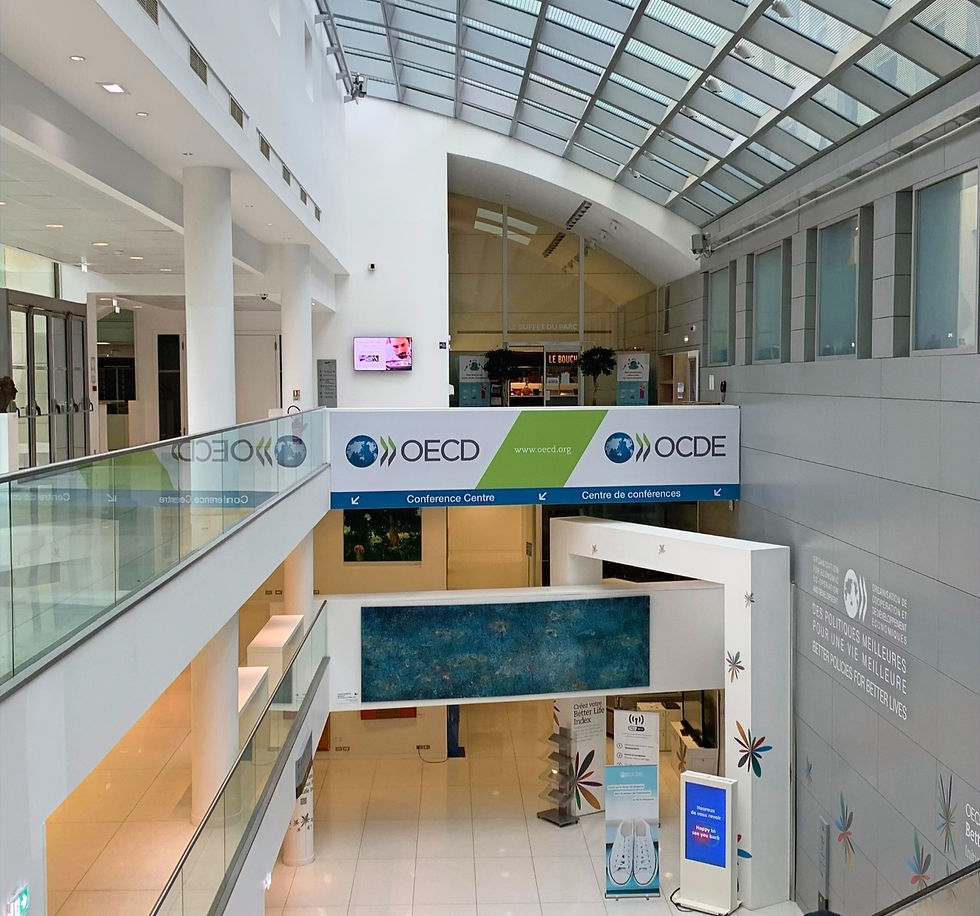Our takeaways of the '9th OECD Forum on Due Diligence in the Garment and Footwear Sector'
- hannahlam3
- Feb 20, 2023
- 5 min read

The gripping speech by Nazma Akter, a former Bangladeshi garment worker, marked the opening of the 9th OECD Forum on Due Diligence in the Garment and Footwear sector in Paris. In her colourful saree, Nazma stood proudly in front of a crowd filled with representatives from major brands, manufacturers, international organisations and NGOs to speak up. Speak up about big brands putting livelihoods at risk to maximise their profit, about the power imbalances, the unfair business practices, the lack of accountability and lack of rigorous implementation on legally binding agreements. She urged the need for system change in which the dialogues include the workers at the same level as brands and suppliers, the need for freedom of association, strict due diligence, and fair practices. Nazma’s speech set the scene for the two following days and here are our main takeaways.

LIVING WAGE
For workers, a living wage and the ability (or rather inability) to afford the basic needs for them and their family is a main concern. If you live in a high income country, the minimum wage is most likely sufficient to afford basic needs, however, if you live in a less developed country, your odds for a minimum wage to be sufficient are lower. Certain countries do not have a policy about minimum wage, other countries do have it but it isn’t strictly enforced. In fact, 60 million workers worldwide live in countries with no minimum wage and another 120 million workers live in countries with a lack of implementation of the minimum wage.
A minimum wage is an important step towards achieving a living wage. Achieving universal living wage would be a tremendous milestone; however it shouldn’t be the ultimate end goal. A wage should allow people to expand their opportunities and economic perspectives, not merely survive.
What is holding brands and suppliers back to paying their workers a living wage? We find some arguments valid, others not so much. We can understand that determining a living wage is not a straight forward mission - there are discussions about what a living wage consists of, which varies from country to country. Additionally, a key interrogation for brands is how to remain competitive and provide a living wage without risking the value chain. However, a brand representative of a panel has argued it is difficult to find suppliers willing to pay their workers a living wage, however, no indication was given about whether the brand made an offer which would allow the supplier to pay its workers a living wage and prepare the order in time without the need of excessive overtime.
Immediate action you can take: sign the Good Clothes, Fair Pay (goodclothesfairpay.eu) petition

GREENWASHING
Greenwashing is a popular word in our era of overconsumption and the textile industry is no stranger to this practice. It connotes brands making unsubstantiated claims deceiving their customers into believing their company’s products are sustainable and environmentally friend. Common words to greenwash are: natural, earth friendly, recyclable, and degradable.
Greenwashing is problematic for multiple reasons: it misleads customers and undermines their trust; it’s a bad business practice which goes against the honest principles of marketing; and it disguises the level of change necessary. Greenwashing is not only a risk for the company making dishonest claims, but it can hurt an entire sector as customer trust is easy to lose but hard to regain. From a customer’s perspectives it can be rather overwhelming to verify all the claims and it’s an unrealistic expectation for a customer to research each brand and product before making a purchase.
During this panel talk, there were some debate about how much transparency and details should be disclosed to customers. Some argue a brand should be as transparent as possible about all its efforts towards sustainability, especially if large sums have been invested towards progress. On the other hand, others argued for green-hushing, i.e. companies should keep quiet about their research until there is proof of a positive impact. We’ll let you make your own mid about his. A consensus was found over the dire need to restore credibility by providing traceability and harmonisation across the supply chain.
That being said, the best advice to reduce our impact on an individual level is to consume less because…
“...You can’t shop your way out of climate change.”
– George Harding-Rolls, Changing Markets Foundation
Tip for reader: ‘Clear Fashion’ and ‘GoodOnYou’ are apps rating how ethical and sustainable fashion brands are.
DUE DILIGENCE
Assessing risks and responsible business conduct (RBC)
There is no one size fits all tool for due diligence. In the garment and footwear sector, tailored due diligence activities should be conducted throughout the supply chains. Effective due diligence helps prioritize the challenges and identify the risks. An effective due diligence doesn’t require monitoring every single good, but rather measuring and demonstrating progress.
Proposed observations for productive due diligence by the panel includes:
Questioning whether the implemented laws and initiative are efficient in identifying the risks;
Including the workers in the framework and the reviews (they are often excluded whilst conducting the auditing);
Invest to mitigate and reduce the risks to fond the root causes for long-term benefits;
Invest in nurturing long-term relationships between brands and suppliers to harvest trust;
Shifting towards responsible sustainability with appropriate contracts centred around social and environmental risks
Whilst moving towards RBC and disrupting the sector for social and environmental justice, it is key to steer away from compliance based approach because no business can audit its way out of a problem.
Moving towards a circular value chain
What does a circular business model look like, especially for multinational brands? Unfortunately, this remains an unanswered question. For now, circularity remains an opportunity to conduct business better, a concept to explore with trials and failures. There are many aspects about a circular value chain that are to be explored: how to scale up solutions? How to forecast the risks as the suppliers adapt? How to build trust with a concept that hasn’t been proven successful yet?
What is definitely known is that the current business models are not adequate to welcome a circular model. The Global Fashion Agenda has come up with a circular design guide to experiment with new business models and mechanisms for a just transition. Investments are needed to conduct pilot projects, there is a major learning curve ahead but it is unavoidable.
LAST IMPRESSIONS

We have left the conference with newly acquired knowledge, ideas and contacts. A movement has been put in motion to tackle the social and environmental problems posed by the garment sector. The current business models are difficult to change and adapt, even for those who do want to make efforts due to long and complex supply chains. However, solutions are emerging and a need for more investment for projects, as well as for risk assessment and prevention are needed. The garment sector must be politicised, strict legally binding laws and agreements are urgent because we cannot wait for voluntary initiatives by brands anymore.
Plaidons Responsable
20/02/2023




Outerwear plays a huge role in defining personality, and that’s exactly why Yellowstone Jackets remain so popular. They not only reflect the strength and boldness of the Dutton family but also offer long-lasting quality. Perfect for casual wear or outdoor activities, these jackets have become must-haves for true western fashion enthusiasts.